The Persian Halva Safarani حلوا زعفرانی is very different from the Halva you know from Turkish or Arabic stores. This recipe is an old and classic version made from wheat flour and oil or butter. Saffron is responsible for a beautiful color and at the same time revitalizes the soul. Sugar adds sweetness, rose water a light floral aroma and warming cardamom a light tangy citrus note. We often enjoy this uncomplicated yet spectacular dessert with Nan-e Barbari for breakfast. Halva means “sweet” and dates back to 7th century Persia. If you prepare it with oil like I did in this recipe, you even have a delicious vegan dessert. Let it melt in your mouth!
HALVA FOR SPECIAL CEREMONIES
Halva Safarani is a traditional Persian dessert we prepare for centuries as nazri during various ceremonies—such as mourning events, funerals, Ramadan, and even joyful celebrations. During the preparation, we think of the beloved person and then hand out halva to the poor, neighbors, family and friends. In Germany, we prepare the Freud und Leid cake (butter/sugar cake) for funerals. However, Halva is not a cake, but rather a kind of confection.
I prepared it in memory of my beloved father, as it is the annual anniversary of his passing. This ritual helps to handle the sorrow and express the love for the passed away person. Halva contains sugar, which immediately increases blood sugar, saffron has an anti-depressive effect, rose water relaxes the nerves and calms the body. Thus, Halva with its sweet, nutty taste gives a little comfort in times of mourning.
TOASTED FLOUR
For this traditional recipe, the flour is first toasted in a pan without oil. You may also know this by “Toasted Flour”. Why do we toast the flour? The toasted flour gains a special flavor and also the color changes during the toasting process. For this, place some flour through a sieve in the pan without adding fat(butter) or oil, turn the stove to medium heat and toast the flour while stirring constantly until it starts to become fragrant. Stirring prevents the flour from burning, otherwise it will turn bitter.
The whole process takes about 15 minutes. If you want to have a deep color, you can even continue roasting the flour for up to 45 minutes. Nowadays, we skip this process and mix the flour directly with the oil in the pan. However, I believe that roasting the flour gives the halva an even more intense flavor. You can use the roasted flour as usual for baking cookies, cakes or bread. It is also great for thickening sauces and soups.
HALVA VERSIONS
Halva has in Teb-e Sonati a Persian traditional medicine, warm attributes. Besides Sholeh Zard- saffron rice pudding, Fereni – rice cream with raspberry puree and pashmak, Toot – marzipan confection, Kachi and Baghlava, Halva is a typical and very popular Persian dessert. There are an incredibly large number of different halva versions and preparation methods.
Depending on the region, we add different flours, spices, vegetables, nuts, or fruits to halva. Sometimes, we use rice flour to make a version called Tar Halva, which is vegan and gluten-free. When prepared with whole wheat flour, it becomes especially nutritious. Some even combine three types of flour—wheat, rice, and chickpea—to create Halva Se Ardeh. Others replace sugar with grape syrup, which many believe to be the original sweetener used before sugar existed.
Some prepare Halva Khorma with dates, and many also know it as Ranginak. In Hamadan, locals make Halva Zardeh, adding eggs to the paste. In other regions, they prepare Halva Sheer with milk. Halva Ardeh is based on tahini and often includes whole pistachios. Ardeh, a sesame paste, is typically sweetened with syrup. Cooks also flavor halva with pureed carrots, pistachios, almonds, walnuts, ginger, chocolate, coffee, and many other ingredients.
Decorating halva is considered an art, and everyone is free to express their creativity according to their taste.
INGREDIENTS SAFFRON SYRUP
1 tsp saffron threads* ground
280 g sugar
250 ml water
1/4 tsp cardamom powder*
50 – 80 ml rose water*
INGREDIENTS HALVA
140 ml oil or butter
280 g flour
DECORATION (optional)
PREPARATION SAFFRON SYRUP
Grind saffron threads finely in a mortar and add one or two ice cubes and let them melt. Add sugar and water to a saucepan and heat until sugar is dissolved, do not bring to a boil. Add saffron threads and cardamom powder and add according to taste more or less rose water, remove from heat and set aside.
PREPARATION HALVA
In the classic version, the flour is sifted through a sieve in a coated pan with high sides and roasted over medium heat without adding any oil until the flavor rises. During this process, the flour is constantly stirred with a wooden spoon until the fragrance rises, which takes about 15 minutes. Sift the toasted flour again and return it to the pan, adding the oil.
Continue stirring until a smooth and golden roux is formed. Stir constantly till the creamy paste has no clumps and changes color and becomes a little darker, this will take about 10 minutes. Some like halva very dark others a little lighter, it’s a matter of taste. The longer you roast it the darker the paste will be.
Add saffron syrup and keep stirring until the paste is combined. Stir until the paste no longer sticks to the bottom. After about 5 minutes, take the pan in your hand and move the paste back and forth in the pan until it comes off the pan and you have a large clump, the paste is now ready. Transfer to a flat serving plate and smooth the surface with the back of an oiled spoon, rounding the sides nicely.
Press patterns into it with a spoon and a knife or even a glass. If you don’t like the look, you can easily smooth it back and decorate again. Garnish as desired with the pistachios and rose petals.
Halva is best enjoyed with a delicious chai or with Barbari bread.
BEFARMAYID!
Susan
The items marked with * are affiliate links, referral links. If you buy through this link, I get a small commission. The price stays the same for you and you can easily support my efforts. A big thank you ♥

Halva Safarani حلوا زعفرانی
Let it melt in your mouth!
Ingredients
INGREDIENTS SAFFRON SYRUP
- 1 tsp saffron threads freshly ground
- 280 g sugar
- 250 ml water
- 1/4 tsp cardamompowder
- 50-80 g Rose Water
INGREDIENTS HALVA
- 140 ml oil or butter
- 280 g flour
DECORATION (optional)
- 10 Pistachio sticks
- 1 Rose petals
Instructions
PREPARATION SAFFRON SYRUP
-
Grind saffron threads finely in a mortar and add one or two ice cubes and let them melt.
-
Add sugar and water to a saucepan and heat until sugar is dissolved, do not bring to a boil.
-
Add saffron threads and cardamom powder and add according to taste more or less rose water, remove from heat and set aside.
PREPARATION HALVA
-
In the classic version, the flour is sifted through a sieve in a coated pan with high sides and roasted over medium heat without adding any oil until the flavor rises. During this process, the flour is constantly stirred with a wooden spoon until the fragrance rises, which takes about 15 minutes.
-
Sift the toasted flour again and return it to the pan, adding the oil. Continue stirring until a smooth and golden roux is formed. Stir constantly till the creamy paste has no clumps and changes color and becomes a little darker, this will take about 10 minutes. Some like halva very dark others a little lighter, it’s a matter of taste. The longer you roast it the darker the paste will be.
-
Add saffron syrup and keep stirring until the paste is combined. Stir until the paste no longer sticks to the bottom.
-
After about 5 minutes, take the pan in your hand and move the paste back and forth in the pan until it comes off the pan and you have a large clump, the paste is now ready.
-
Transfer to a flat serving plate and smooth the surface with the back of an oiled spoon, rounding the sides nicely.
-
Press patterns into it with a spoon and a knife or even a glass. If you don’t like the look, you can easily smooth it back and decorate again.
-
Garnish as desired with the pistachios and rose petals.
Recipe Notes
Halva is best enjoyed with a delicious chai or with Barbari bread.
Save the recipe for later on Pinterest!
Have you cooked this or maybe another delicious recipe of mine? Feel free to leave me a comment below. If you tag your picture on Instagram with @labsalliebe and use the hashtag #labsalliebe, I won’t miss a post and will be happy to leave you a comment as well. Can’t wait to see your creations.
♥♥♥♥♥♥♥♥♥♥♥♥♥♥♥♥♥♥♥♥♥♥♥♥♥♥♥♥♥♥♥♥
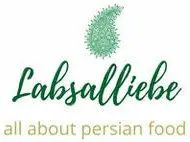

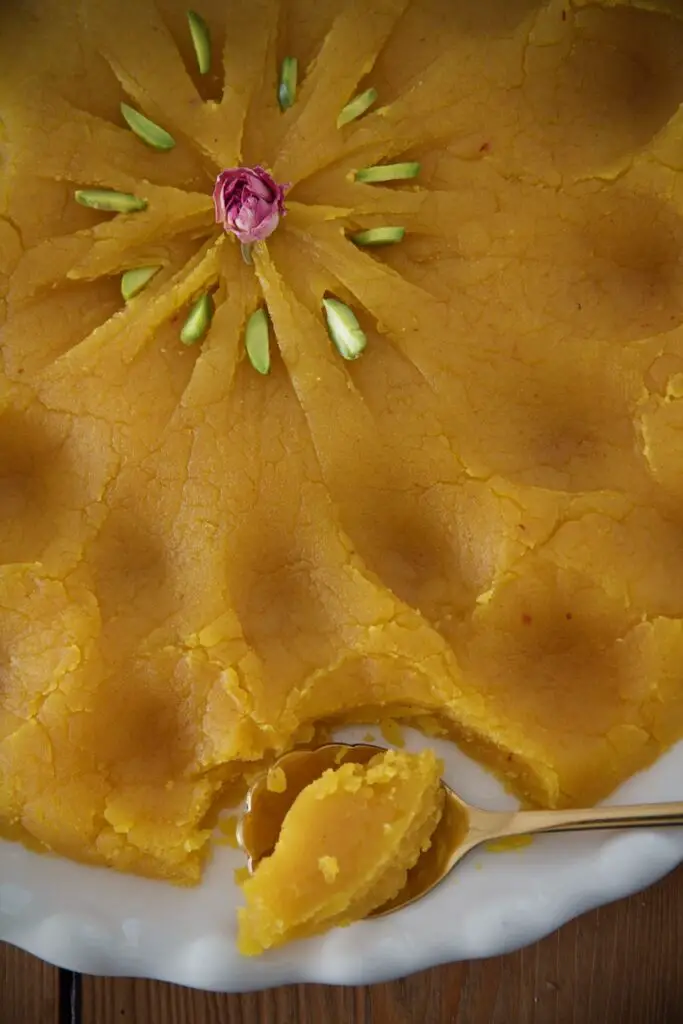
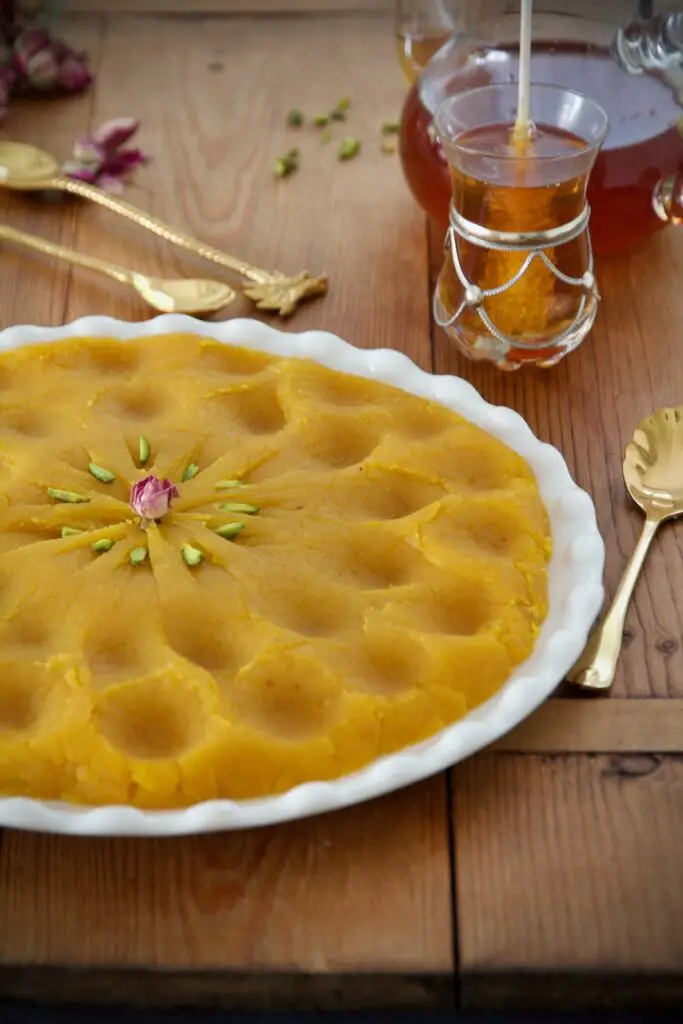
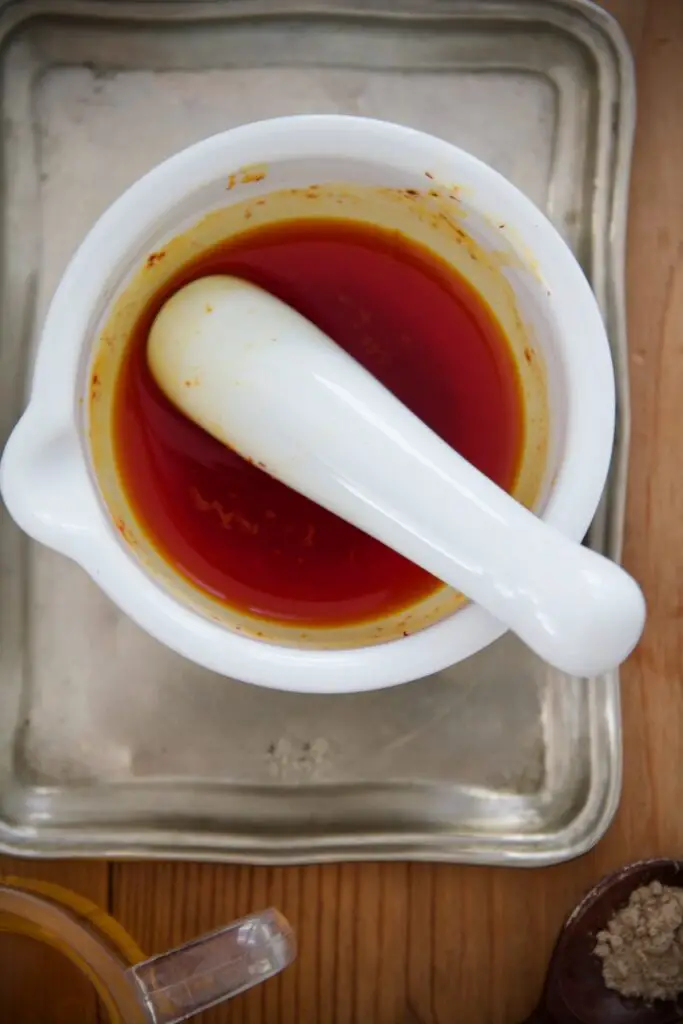

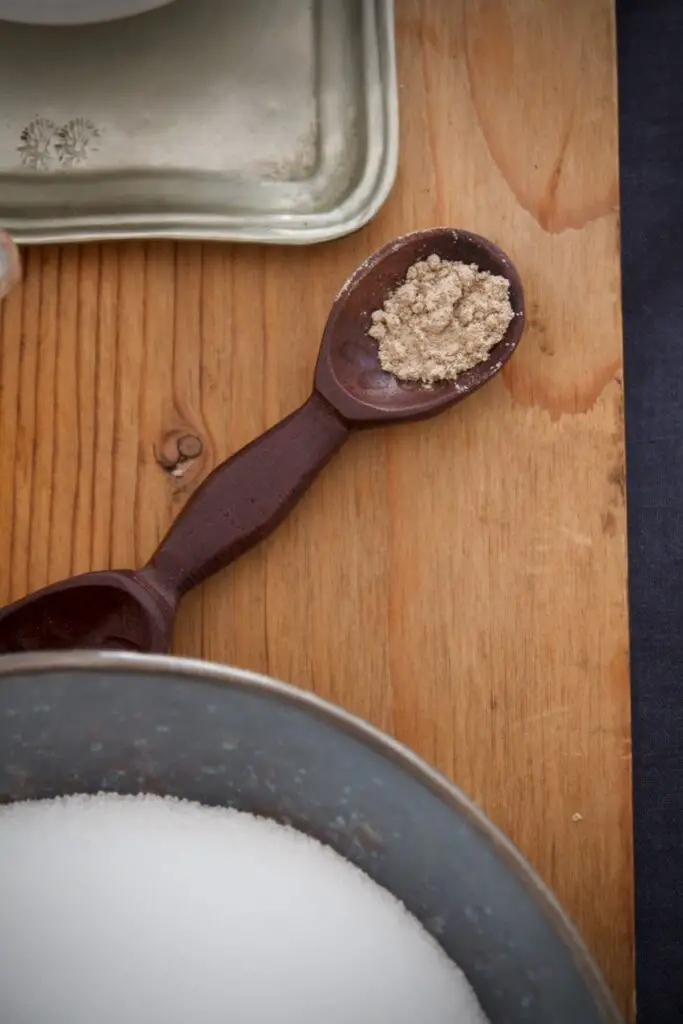
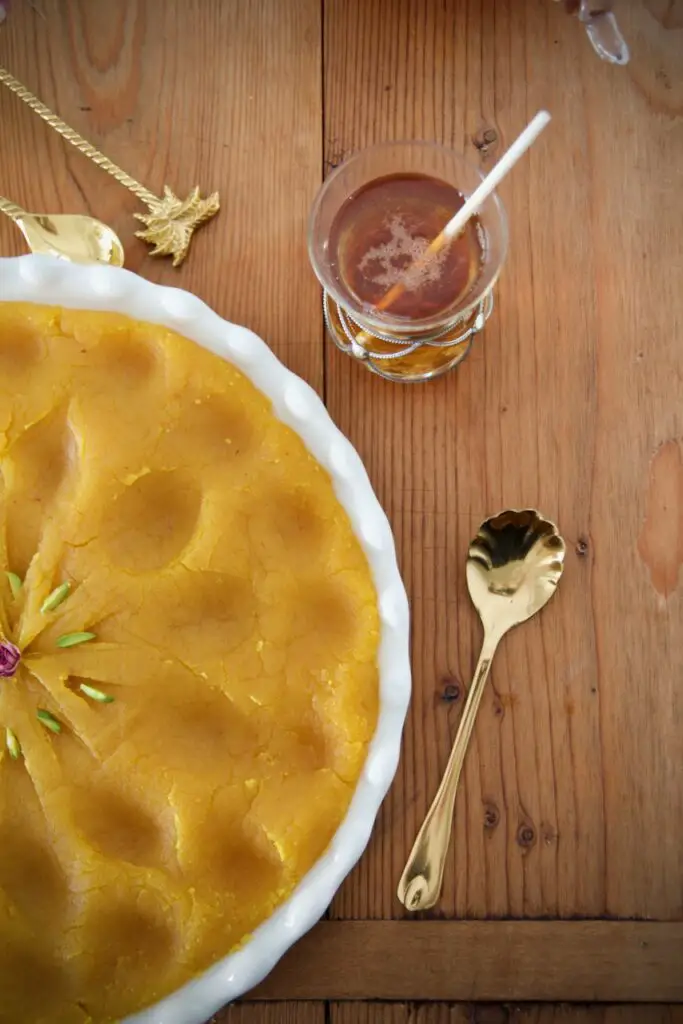

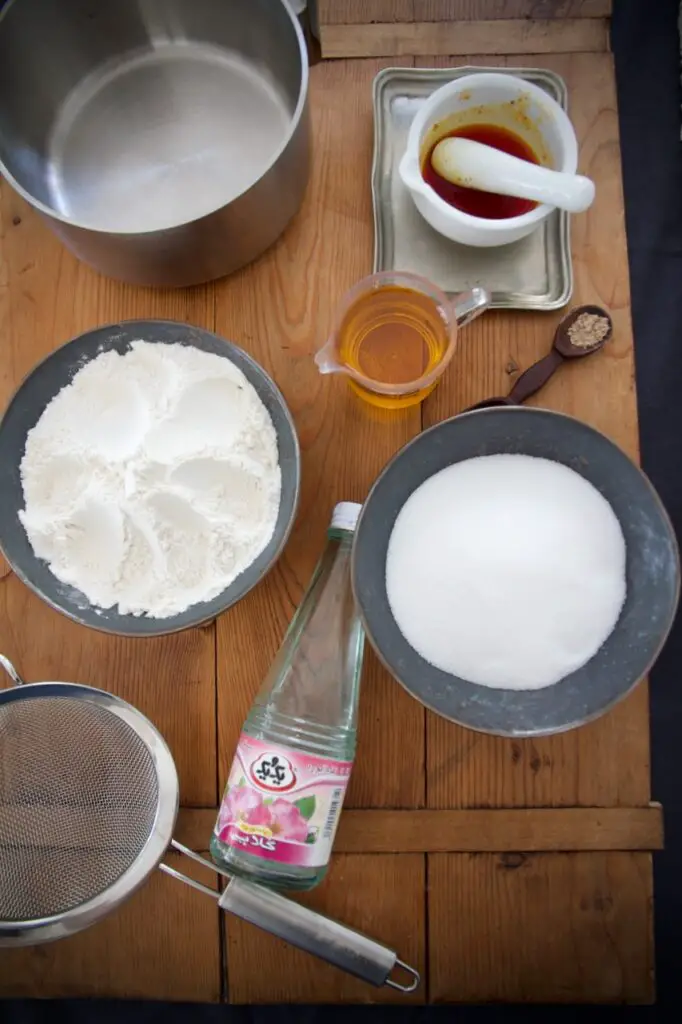




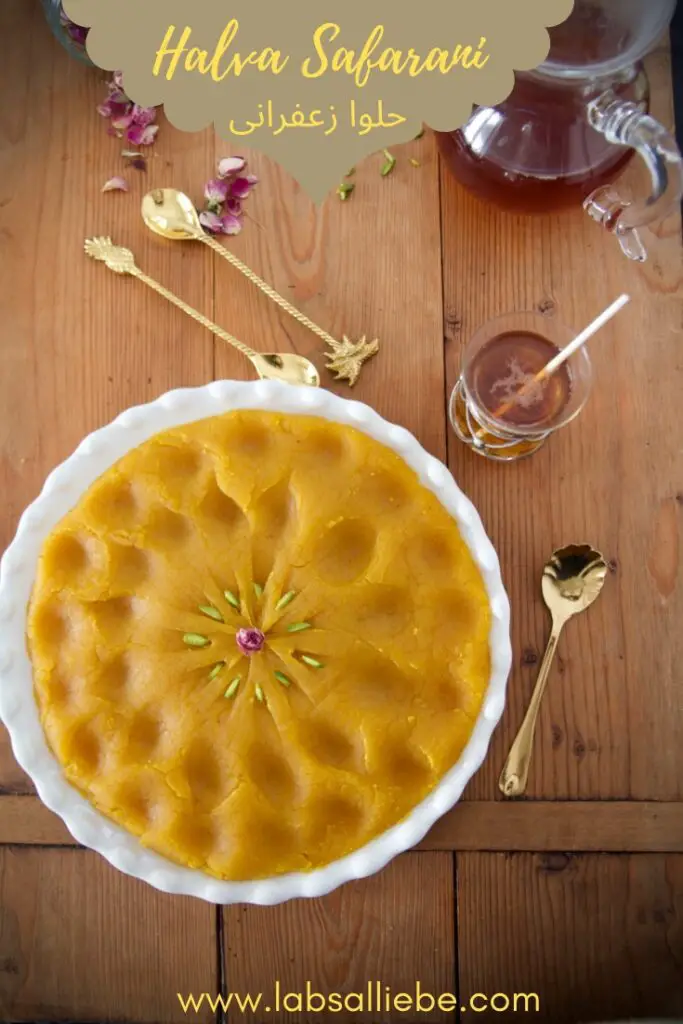
Thank you very Mich, Eid mubarak!
Thank you for your comment, Eid Mubarak!
Persians invented Halva. The Turkish and Arabic Halva is nothing like Persian Halva.
Dear Mikaela,
Thank you for your comment.
Persian Halva, with its unique texture and flavors, stands apart from its Turkish and Arabic counterparts, each with their own distinct characteristics.
The Persian Halva, known for its delicate saffron and rosewater notes, offers a delightful contrast to the nutty, tahini-based Turkish Halva and the semolina-based Arabic Halva. Each variety of Halva not only preserves a piece of its origin’s history but also enriches our global culinary heritage.
How wonderful it is that we can appreciate and enjoy these different interpretations of a beloved treat!
Khosh amadid,
Susan
Dear Susan,
Persian Halva is unique and original. The Persians invented Halva which probably explains why the recipe tastes so good in the Persian version. I personally don’t like Turkish and Arabic Halva, but to each their own!
Dear Mikaela,
Totally agree—Persian Halva really does have a special touch with its unique flavors and texture.
I also prefer the Persian Halva, but it’s cool to see how Turkish and Arabic versions each bring something different to the table.
Food is such a great way to explore and appreciate diverse cultures, and it’s always fun to share what we love with each other.
Khoshamadid
Susan